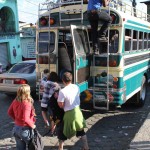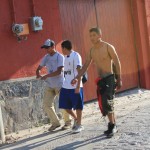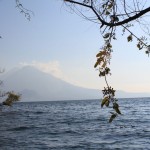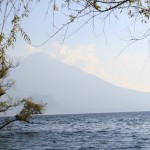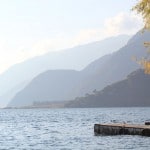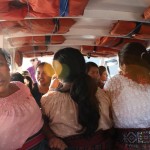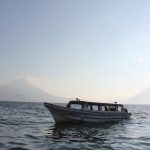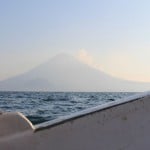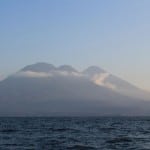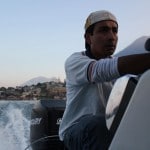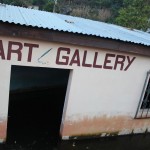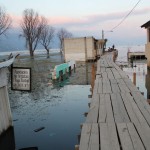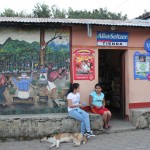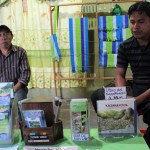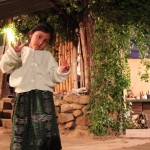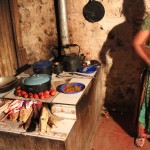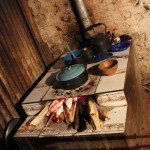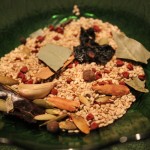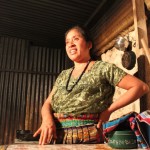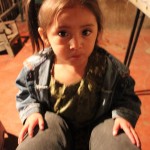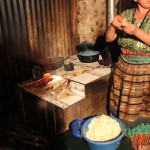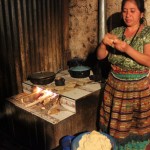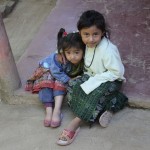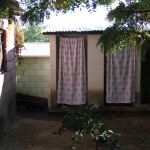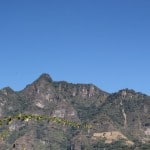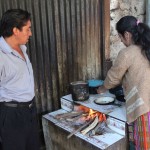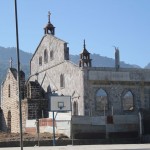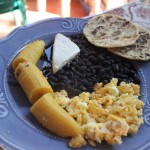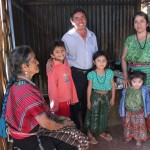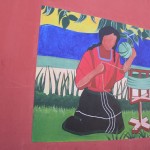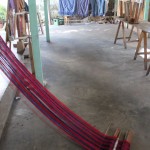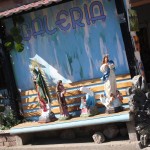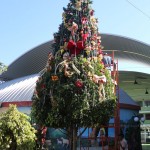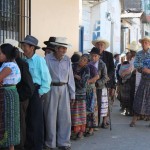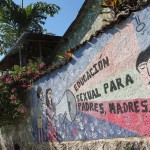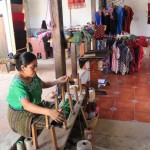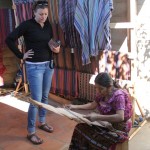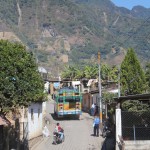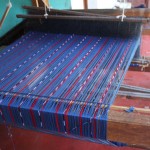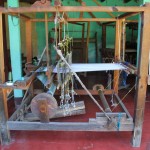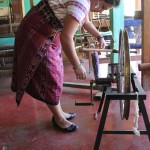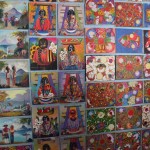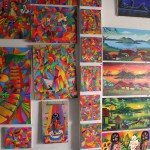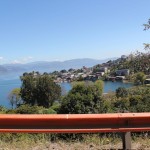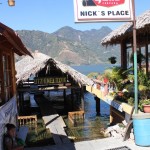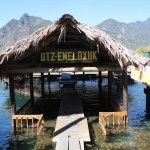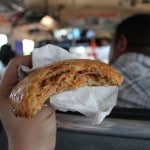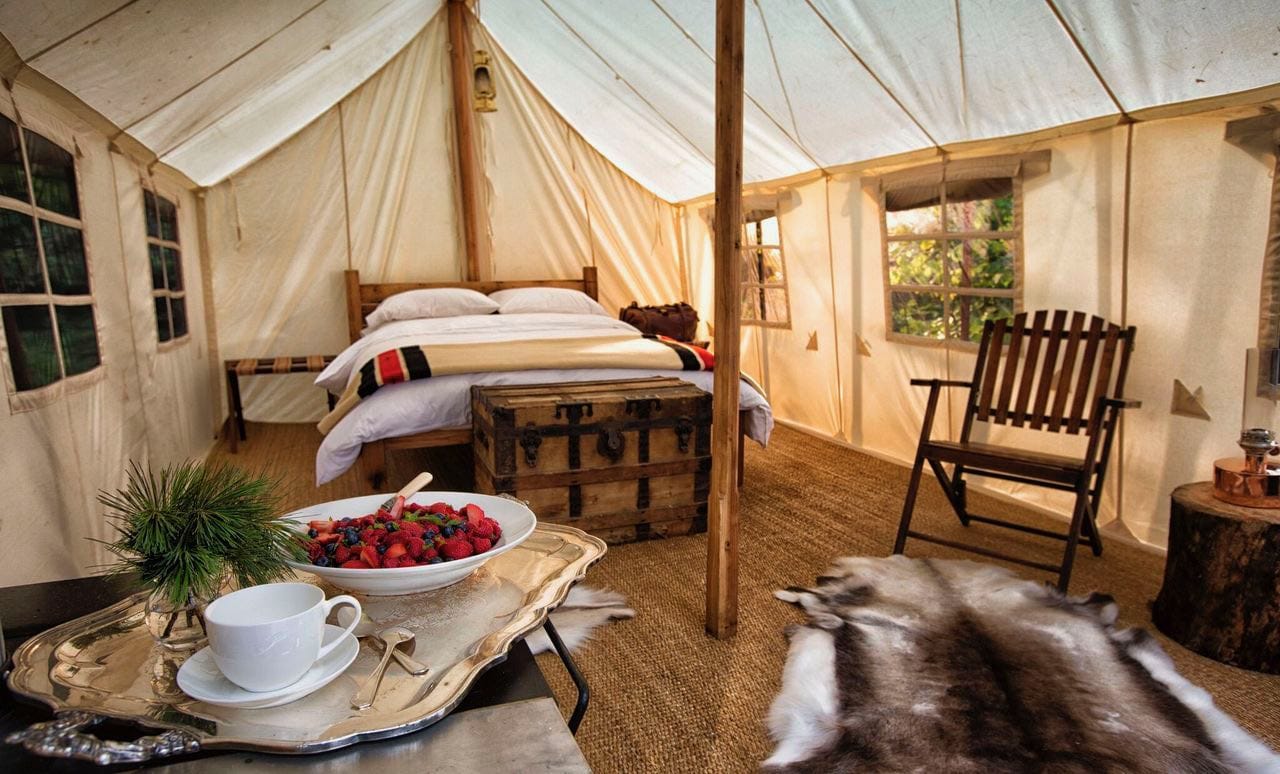Twelve native villages, blue-grey mountains and three volcanoes line the shores of this lake resulting in a wonderful combination of unusual natural beauty and traditional culture. Gemma and I arrived at the lake just as the sun was itching to set, after a busy day at Chichicastenango market. We hopped off our bus and walked to the dock where boats depart for the various villages across the water. We had to wait a while because none of the boats would leave until there were at least twelve people ready to depart. I jumped for joy when I saw a gaggle of indigenous Mayan woman skipping towards our boat. We zoomed across the lake for about an hour, first stopping at popular backpacker haunt San Pedro and then at San Juan la Laguna where we would be staying the night.
As soon as we hopped off our boat I was taken aback by the remains of last years flooding. The shores of the lake had now extended and several shops and houses were under water. A bit eerie! San Juan la Laguna is made up of 3000 inhabitants, mostly Mayas. We huffed and puffed up a steep hill and arrived at Rupalaj K’istalin the community based ecotourism organization which would be coordinating our stay via my work with Planeterra. Gemma acted as interpreter as the President and Secretary of the organization welcomed us to their village and informed us of the history and goals of the organization. We then grabbed our bags and greeted our homestay family where we would be spending the evening and following morning. We placed our bags in our humble bedroom and joined the mother of the family (and several of her little inquisitive kids) in the kitchen as she prepared our dinner. Her kitchen consisted of a simple table and wood burning stove. I helped her prepare a few tortillas but mostly watched as she prepared a delicious traditional meal called Pepian. This chicken dish (made from the little birds poking about their property) is made of roasted tomatoes, sesame, garlic, pumpkin seed, dried chile, annato, fat pepper, clove cinnamon, cilantro and celery leaf. Our dinner was served with hot tortillas and rice.
I didn’t sleep so well that night as an evangelical church was wild with worship into the wee hours of the night and the families chickens started their own chorus at the crack of dawn. In the morning the patriarch of the family (who is also a tour guide) sat at the table with us as his wife prepared our breakfast (coffee, plantain, refried beans, scrambled eggs, farmers cheese and tortillas). He spoke decent English which allowed me an opportunity to ask some questions of my own. My most memorable conversation was about his family and a comment he made that made me ponder. The family has six children, one of which is a 22 year old school teacher who lives with her husband in another town. The father very proudly stated that his 22 year old daughter had no children. Having traveled extensively through Latin America and knowing the “you must marry and have children” mentality of the Catholic order here I was intrigued. He then continued to explain that the community is educating its children at school on sexual health. It seems that this proud father wants a different life for his daughter. This was also evident when he advised us that the family was saving all of its money to send its eldest son to University for Computer Science. As new ideas emerge, places and people change.
After breakfast one of the woman who works for Rupalaj K’istalin took us on a tour of the various coop’s in town. We visited several weaving coops as well as leather, herbal beauty products and an artists market. After our tour we grabbed our bags, hopped in a tuk tuk, grabbed a boat back to the main dock and hopped on yet another chicken bus bound for Antigua.
